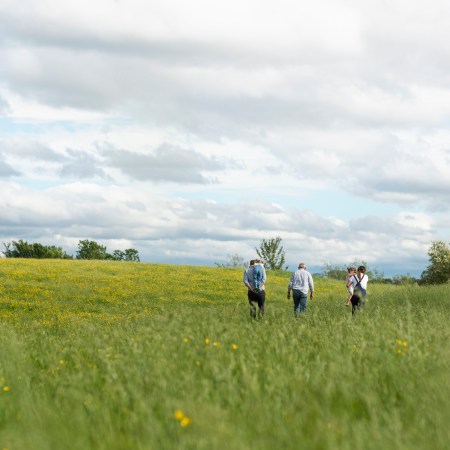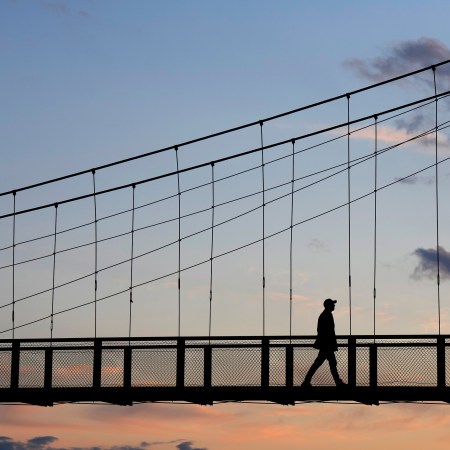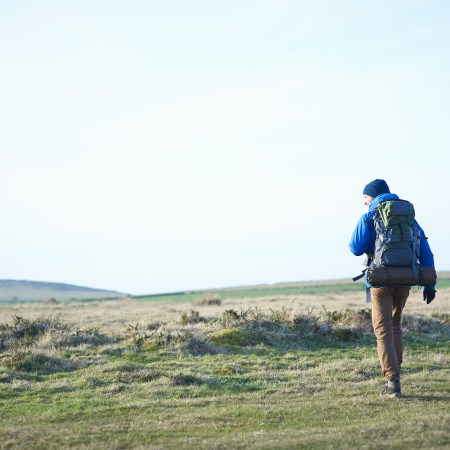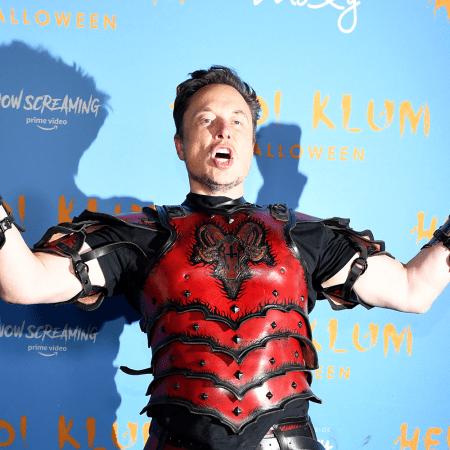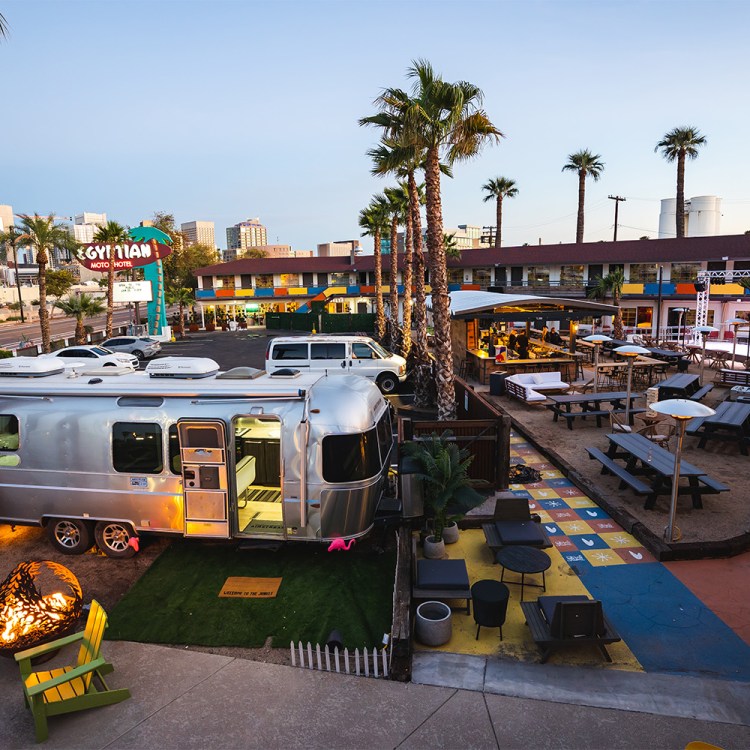I’ve been thinking lately of having a T-shirt made, or several identical T-shirts, plain with block letters front and back: SIX FEET, they would say. I fantasize about wearing one each time I step outside.
As Los Angeles, where I live, moves through its second week of “Safer at Home” (our mayor’s feel-good euphemism for sheltering in place), I find myself increasingly attentive to social distancing … or maybe I’m more wary of my fellow human beings. “Everybody is the other right now,” my wife observed last night, describing how it feels to go for a walk in our generally quiet neighborhood. The issue isn’t the number of people on the streets, but that, on our narrow residential sidewalks — often a single strip of concrete bound on either side by grass or plantings — six feet of distance can be difficult to find.
I am a dedicated urban walker. Born and raised in Manhattan, I learned early to associate walking with a kind of agency. As an adolescent, eager to get out of the house, I began a habit of making meandering loops along the streets and avenues: from one end of Manhattan to another, or over the Brooklyn Bridge. In part, this was a way to claim the city; in part, a way to claim myself. As one of my writerly models, Alfred Kazin, admits in his 1951 memoir A Walker in the City, “I could speak in the fullness of my own voice only when I was alone on the streets, walking about.”
I brought my pedestrian habits with me when I moved to Southern California, although it’s hard to call Los Angeles a walking town. But that’s part of the point, or part of the pleasure: walking in a place where, not infrequently, it feels as if you’re cutting against the grain. What’s that I was saying about agency? In Los Angeles, walking can make you feel as if you’re getting a glimpse beneath the surface, as you move, block by block, through a cityscape that has been designed — or so it often appears — to be accessible primarily to the automobile.
I walk for this and other reasons: to clear my head, to place myself, to get some exercise. Five miles, most days: east nearly to La Brea, north to Wilshire, three laps around the Page Museum and then west past the Tar Pits to the Los Angeles County Museum of Art, where I pass underneath Michael Heiser’s 340-ton boulder “Levitated Mass.” These are the landmarks that define my neighborhood, the physical boundaries of my community. They make the routine of this walk soothing, settling. They make it feel like home.
But here in the age of social distancing, what does home, or community, even mean? I’ve always liked seeing people on the street: runners, young parents pushing strollers, couples out with their dogs. In a neighborhood where not so many residents walk, sharing the sidewalk with one another can make for its own kind of camaraderie. Now, it feels a bit more like contagion, not least because the very element that once brought us together — our proximity as neighbors — is what puts us most at risk. Although I’m still walking, I face the outdoors differently.
What does this difference look like? For one, I try to walk when fewer people are out: early mornings, evenings before sunset. As spring settles in, however, and people grow enervated from days spent in seclusion, the shape of time, the way we use it, has become a relative thing. Whatever the hour, then, I take my bearings when I leave the house, check north and south before setting off in whichever direction appears most clear. Sometimes, this allows me to follow my once standard route; sometimes, it does not. Still, that just seems appropriate at a moment when the idea of any fixed itinerary or routine has disappeared. I walk fast — I have always walked fast — and with no formal plan except to stay out for an hour. When circumstances allow it, I find myself marveling at everything I used to take for granted: the trees, the sky, the small stucco houses with their red tile roofs, a tactile world that once seemed so solid, even if what I mostly recognize in it now is vulnerability.
And yet, that vulnerability doesn’t belong to the world — it belongs to us. I think about this every time I walk. I set out down the middle of the sidewalk, cross whenever I see another human coming, or step into the street. I hang back, wait for that man on his phone to reach the corner ahead of me, make sure to keep my distance: six, eight, 10, a dozen feet. Sometimes, such disruptions occur several times in a single block. Sometimes, not at all for half a mile. Many of my fellow walkers in the city get it, like the jogger who swung wide herself last week to keep space between us; we nodded at one another as we passed. Others regard me more skeptically. On one recent walk, I backed away from an older man on a bicycle after he breached my six-foot containment zone. Twenty minutes later, at another intersection, he scowled and shook his head as I receded from his path once more.
We’ve been told that going outdoors is good for us. We’ve been told to exercise and get fresh air. I need these things like I need food and water; they help to keep me not just healthy (or so I hope), but also sane. At the same time, the uncertainty, the back-and-forth of it, reflects the larger uncertainties we’re confronting, in which no one knows what’s coming next.
This past weekend, in Larchmont Village, one of Los Angeles’ higher-end districts, someone posted a flyer warning, “Enjoy your walks elsewhere.” The message is straight out of that old Twilight Zone episode “The Monsters Are Due on Maple Street,” with its implication that our neighbors are who we ought to fear. How can that be right when we are in this together? How can that be right when we are social distancing to protect not only ourselves, but also our communities? If everybody is the other, as my wife said, then, in a world where even an activity as unexceptional as going for a walk has become a surreal dance of avoidance, the term applies — it must — to all of us.
For more travel news, tips and inspo, sign up for InsideHook's weekly travel newsletter, The Journey.

